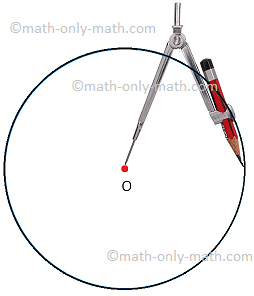Latus Rectum of the Ellipse
We will discuss about the latus rectum of the ellipse along with the examples.
Definition of the latus rectum of an ellipse:
The chord of the ellipse through its one focus and perpendicular to the major axis (or parallel to the directrix) is called the latus rectum of the ellipse.
It is a double ordinate passing through the focus. Suppose the equation of the ellipse be \(\frac{x^{2}}{a^{2}}\) + \(\frac{y^{2}}{b^{2}}\) = 1 then, from the above figure we observe that L\(_{1}\)SL\(_{2}\) is the latus rectum and L\(_{1}\)S is called the semi-latus rectum. Again we see that M\(_{1}\)SM\(_{2}\) is also another latus rectum.
According to the diagram, the co-ordinates of the
end L\(_{1}\) of the latus
rectum L\(_{1}\)SL\(_{2}\) are (ae,
SL\(_{1}\)). As L\(_{1}\) lies on the ellipse \(\frac{x^{2}}{a^{2}}\) + \(\frac{y^{2}}{b^{2}}\) = 1, therefore, we
get,
\(\frac{(ae)^{2}}{a^{2}}\) + \(\frac{(SL_{1})^{2}}{b^{2}}\) = 1
\(\frac{a^{2}e^{2}}{a^{2}}\) + \(\frac{(SL_{1})^{2}}{b^{2}}\) = 1
e\(^{2}\) + \(\frac{(SL_{1})^{2}}{b^{2}}\) =
1
⇒ \(\frac{(SL_{1})^{2}}{b^{2}}\) = 1 - e\(^{2}\)
⇒ SL\(_{1}\)\(^{2}\) = b\(^{2}\) . \(\frac{b^{2}}{a^{2}}\), [Since, we know that, b\(^{2}\) = a\(^{2}\)(1 - e\(^{2}\))]
⇒ SL\(_{1}\)\(^{2}\) = \(\frac{b^{4}}{a^{2}}\)
Hence, SL\(_{1}\) = ± \(\frac{b^{2}}{a}\).
Therefore, the co-ordinates of the ends L\(_{1}\) and L\(_{2}\) are (ae, \(\frac{b^{2}}{a}\)) and (ae, - \(\frac{b^{2}}{a}\)) respectively and the length of latus rectum = L\(_{1}\)SL\(_{2}\) = 2 . SL\(_{1}\) = 2 . \(\frac{b^{2}}{a}\) = 2a(1 - e\(^{2}\))
Notes:
(i) The equations of the latera recta of the ellipse \(\frac{x^{2}}{a^{2}}\) + \(\frac{y^{2}}{b^{2}}\) = 1 are x = ± ae.
(ii) An ellipse has two latus rectum.
Solved examples to find the length of the latus rectum of an ellipse:
Find the length of the latus rectum and equation of the latus rectum of the ellipse x\(^{2}\) + 4y\(^{2}\) + 2x + 16y + 13 = 0.
Solution:
The given equation of the ellipse x\(^{2}\) + 4y\(^{2}\) + 2x + 16y + 13 = 0
Now form the above equation we get,
(x\(^{2}\) + 2x + 1) + 4(y\(^{2}\) + 4y + 4) = 4
⇒ (x + 1)\(^{2}\) + 4(y + 2)\(^{2}\) = 4.
Now dividing both sides by 4
⇒ \(\frac{(x + 1)^{2}}{4}\) + (y + 2)\(^{2}\) = 1.
⇒ \(\frac{(x + 1)^{2}}{2^2} + \frac{(y + 2)^{2}}{1^{2}}\) ………………. (i)
Shifting the origin at (-1, -2) without rotating the coordinate axes and denoting the new coordinates with respect to the new axes by X and Y, we have
x = X - 1 and y = Y - 2 ………………. (ii)
Using these relations, equation (i) reduces to \(\frac{X^{2}}{2^{2}}\) + \(\frac{Y^{2}}{1^{2}}\) = 1 ………………. (iii)
This is of the form \(\frac{X^{2}}{a^{2}}\) + \(\frac{Y^{2}}{b^{2}}\) = 1, where a = 2 and b = 1.
Thus, the given equation represents an ellipse.
Clearly, a > b. So, the given equation represents an ellipse whose major and minor axes are along X and Y axes respectively.
Now fine the eccentricity of the ellipse:
We know that e = \(\sqrt{1 - \frac{b^{2}}{a^{2}}}\) = \(\sqrt{1 - \frac{1^{2}}{2^{2}}}\) = \(\sqrt{1 - \frac{1}{4}}\) = \(\frac{√3}{2}\).
Therefore, the length of the latus rectum = \(\frac{2b^{2}}{a}\) = \(\frac{2 ∙ (1)^{2}}{2}\) = \(\frac{2}{2}\) = 1.
The equations of the latus recta with respect to the new axes are X= ±ae
X = ± 2 ∙ \(\frac{√3}{2}\)
⇒ X = ± √3
Hence, the equations of the latus recta with respect to the old axes are
x = ±√3 – 1, [Putting X = ± √3 in (ii)]
i.e., x = √3 - 1 and x = -√3 – 1.
● The Ellipse
- Definition of Ellipse
- Standard Equation of an Ellipse
- Two Foci and Two Directrices of the Ellipse
- Vertex of the Ellipse
- Centre of the Ellipse
- Major and Minor Axes of the Ellipse
- Latus Rectum of the Ellipse
- Position of a Point with respect to the Ellipse
- Ellipse Formulae
- Focal Distance of a Point on the Ellipse
- Problems on Ellipse
11 and 12 Grade Math
From Latus Rectum of the Ellipse to HOME PAGE
Didn't find what you were looking for? Or want to know more information about Math Only Math. Use this Google Search to find what you need.
Recent Articles
-
Dividing 3-Digit by 1-Digit Number | Long Division |Worksheet Answer
Apr 24, 24 03:46 PM
Dividing 3-Digit by 1-Digit Numbers are discussed here step-by-step. How to divide 3-digit numbers by single-digit numbers? Let us follow the examples to learn to divide 3-digit number by one-digit nu… -
Symmetrical Shapes | One, Two, Three, Four & Many-line Symmetry
Apr 24, 24 03:45 PM
Symmetrical shapes are discussed here in this topic. Any object or shape which can be cut in two equal halves in such a way that both the parts are exactly the same is called symmetrical. The line whi… -
Mental Math on Geometrical Shapes | Geometry Worksheets| Answer
Apr 24, 24 03:35 PM
In mental math on geometrical shapes we will solve different type of problems on simple closed curves, polygons, basic geometrical concepts, perpendicular lines, parallel lines, circle, terms relates… -
Circle Math | Terms Related to the Circle | Symbol of Circle O | Math
Apr 24, 24 02:57 PM
In circle math the terms related to the circle are discussed here. A circle is such a closed curve whose every point is equidistant from a fixed point called its centre. The symbol of circle is O. We… -
Fundamental Geometrical Concepts | Point | Line | Properties of Lines
Apr 24, 24 12:38 PM
The fundamental geometrical concepts depend on three basic concepts — point, line and plane. The terms cannot be precisely defined. However, the meanings of these terms are explained through examples.




